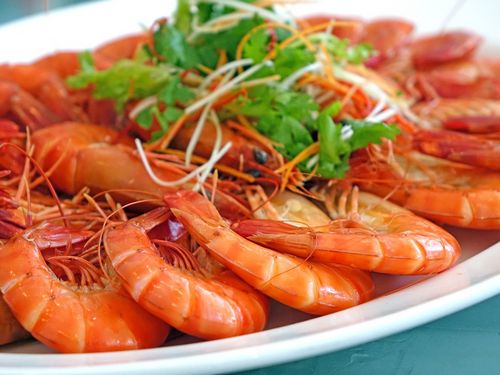
Shellfish is an informal and often mispronounced fishes term referring to exoskeleton-covered aquatic invertebrates commonly called mollusk, which includes several species of mollusks, crustaceans, echinoderms, and other crustacean-like aquatic organisms. Some types of shellfish may be consumed fresh, others may be eaten dried or preserved, but others may be sold fresh and dried. The best type of shellfish to eat is the clam that contains many calcium and protein-rich minerals such as calcium, magnesium, iron, phosphorus, potassium, and sodium.
The shellfish that has the highest nutritional value is the clam, since the meat is rich in protein, calcium, zinc, copper, potassium, and magnesium. Other types of shellfish include oysters, scallops, clams, mussels, and other mollusk-like animals, as well as other types of sea animals like squid, octopus, sharks, and whale. Most types of seafood are usually harvested in a saltwater environment, but some are available in freshwater too.
There are different types of shells and shapes, depending on the nature of the mollusk. Most shellfish have two shell surfaces – a shell with a single hard outer shell and a shell with two hard layers. Shells may also differ in texture and color from mollusk, from very smooth and transparent to rough and irregular, with irregular colors that look similar to mud or sand. Some types of mollusk can also be found in chlorophyll. These mollusks do not have any shell but they contain chlorophyll, which is an essential plant substance that gives them their greenish-yellow color.
Some types of shellfish are best eaten raw, while other types can be eaten cooked with vegetables or cooked in a salad. Fresh fish, especially fresh shellfish are rich in omega-3 fatty acids, which are important for healthy skin and bones. Many foods contain high amounts of vitamin E and EFA, or EPA and DHA, which are essential to the body. In addition, shellfish also contain a lot of essential fatty acids, like omega 3, fatty acids that are vital for healthy skin and hair. While shellfish may seem to be good for the heart, some studies show that it can increase the risk of heart disease in people who have hypertension.
Fatty acids also play a vital role in the body in regulating blood pressure, reducing cholesterol, and lowering blood sugar levels. Other nutrients that may be contained in shellfish may also be beneficial in increasing the production of natural anti-inflammatory chemicals, making it easier for the body to fight cancer and other ailments. The polyunsaturated fat in shellfish helps the body to maintain its natural level of cholesterol and keeps the blood vessels strong.
Fish may also be classified into three groups: oily fish, which are oily in taste and aroma, medium-chain triglycerides (MCT), which are considered healthier fats, and polyunsaturated fish, which are lower in fats, cholesterol, and cholesterol. These oils are also less expensive than oils produced from other fats, since oils obtained from MCT may not be as nutritious. Other types of seafood include flaked fish, which have been ground down and used in recipes, which are high in saturated fats. Many people prefer to buy canned fish, as these may be higher in fiber and more nutritious than dry fish because they contain more protein.
Fresh seafood may also include frozen and canned fish, which come in frozen, smoked, or salted forms.

However, it is important to be cautious and check the contents of canned fish before consuming. This is especially true for seafood in cans that may be filled with pesticides, which may harm your health in the long run. Canned fish may also contain preservatives, which could affect your body’s ability to absorb nutrients. Therefore, it is very important to purchase fresh fish and avoid canned fish.
Shellfish can be a delicious food that is enjoyed by most people. It has been traditionally eaten with many kinds of sauces, soups, salads, dips, stews, and rice dishes. People often choose to eat them in large amounts on their dinner table, especially if there is nothing else for lunch or dinner. This is not because they are necessarily low in calories. or lack in nutrients; rather, it is because they are a healthy food choice that contains very few calories, very little fat, and no fat. and very much essential fatty acids, which are necessary to good health and strong bones and skin.